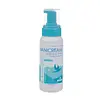What's inside
What's inside
 Benefits
Benefits

 Concerns
Concerns

No concerns
 Ingredients Side-by-side
Ingredients Side-by-side

Water
Skin ConditioningGlycerin
HumectantAmmonium Lauryl Sulfate
CleansingCocamidopropyl Betaine
CleansingSodium Methyl Cocoyl Taurate
CleansingSqualane
EmollientSodium Chloride
MaskingBeta-Glucan
Skin ConditioningCaprylyl Glycol
EmollientRhamnose
HumectantGlucomannan
Skin ConditioningPropanediol
SolventXylitylglucoside
HumectantAnhydroxylitol
HumectantXylitol
Humectant1,2-Hexanediol
Skin ConditioningGlucuronic Acid
BufferingGlucose
HumectantSodium Benzoate
MaskingCoco-Glucoside
CleansingParfum
MaskingStyrene/Acrylates Copolymer
Xanthan Gum
EmulsifyingPhenoxyethanol
PreservativePotassium Sorbate
PreservativeCitric Acid
BufferingCoconut Acid
CleansingGeraniol
PerfumingLimonene
PerfumingHydroxypropyl Guar Hydroxypropyltrimonium Chloride
Water, Glycerin, Ammonium Lauryl Sulfate, Cocamidopropyl Betaine, Sodium Methyl Cocoyl Taurate, Squalane, Sodium Chloride, Beta-Glucan, Caprylyl Glycol, Rhamnose, Glucomannan, Propanediol, Xylitylglucoside, Anhydroxylitol, Xylitol, 1,2-Hexanediol, Glucuronic Acid, Glucose, Sodium Benzoate, Coco-Glucoside, Parfum, Styrene/Acrylates Copolymer, Xanthan Gum, Phenoxyethanol, Potassium Sorbate, Citric Acid, Coconut Acid, Geraniol, Limonene, Hydroxypropyl Guar Hydroxypropyltrimonium Chloride
Ingredients Explained
These ingredients are found in both products.
Ingredients higher up in an ingredient list are typically present in a larger amount.
1,2-Hexanediol is a synthetic liquid and another multi-functional powerhouse.
It is a:
- Humectant, drawing moisture into the skin
- Emollient, helping to soften skin
- Solvent, dispersing and stabilizing formulas
- Preservative booster, enhancing the antimicrobial activity of other preservatives
Beta-Glucan is a polysaccharide. It can be derived from the cell walls of seaweed, oats, yeast, and fungi. It hydrates the skin and helps boost your skin's natural barrier.
As an antioxidant, beta-glucan helps fight free-radicals. Free-radicals are molecules that may damage your skin cells, such as pollution.
Studies show this ingredient may be an effective wrinkle reducer as it can deeply penetrate into skin. It has also been show to help with wound healing.
Learn more about Beta-GlucanCaprylyl Glycol is a humectant and emollient, meaning it attracts and preserves moisture.
It is a common ingredient in many products, especially those designed to hydrate skin. The primary benefits are retaining moisture, skin softening, and promoting a healthy skin barrier.
Though Caprylyl Glycol is an alcohol derived from fatty acids, it is not the kind that can dry out skin.
This ingredient is also used as a preservative to extend the life of products. It has slight antimicrobial properties.
Learn more about Caprylyl GlycolCoco-Glucoside is a surfactant, or a cleansing ingredient. It is made from glucose and coconut oil.
Surfactants help gather dirt, oil, and other pollutants from your skin to be rinsed away.
This ingredient is considered gentle and non-comedogenic. However, it may still be irritating for some.
Learn more about Coco-GlucosideGlycerin is already naturally found in your skin. It helps moisturize and protect your skin.
A study from 2016 found glycerin to be more effective as a humectant than AHAs and hyaluronic acid.
As a humectant, it helps the skin stay hydrated by pulling moisture to your skin. The low molecular weight of glycerin allows it to pull moisture into the deeper layers of your skin.
Hydrated skin improves your skin barrier; Your skin barrier helps protect against irritants and bacteria.
Glycerin has also been found to have antimicrobial and antiviral properties. Due to these properties, glycerin is often used in wound and burn treatments.
In cosmetics, glycerin is usually derived from plants such as soybean or palm. However, it can also be sourced from animals, such as tallow or animal fat.
This ingredient is organic, colorless, odorless, and non-toxic.
Glycerin is the name for this ingredient in American English. British English uses Glycerol/Glycerine.
Learn more about GlycerinWater. It's the most common cosmetic ingredient of all. You'll usually see it at the top of ingredient lists, meaning that it makes up the largest part of the product.
So why is it so popular? Water most often acts as a solvent - this means that it helps dissolve other ingredients into the formulation.
You'll also recognize water as that liquid we all need to stay alive. If you see this, drink a glass of water. Stay hydrated!
Learn more about Water